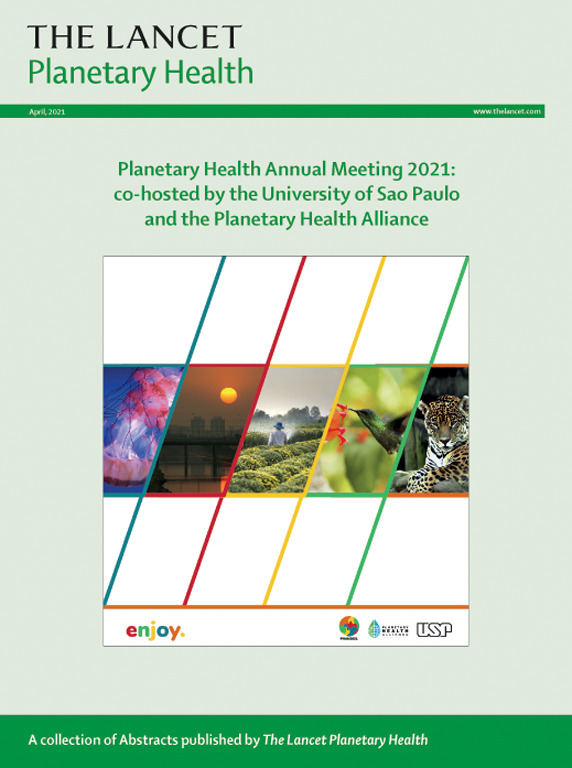生态系统氮富集对花粉过敏的影响:横断面配对比较研究
IF 21.6
1区 医学
Q1 ENVIRONMENTAL SCIENCES
引用次数: 0
摘要
背景:由于环境和生活方式的改变,空气过敏原过敏的患病率正在上升。然而,普遍存在的氮富集在加剧花粉过敏中的作用尚不清楚。本研究旨在通过将由此产生的生态变化与过敏结果联系起来,研究氮对花粉致敏性的影响。方法采用横断面配对比较研究,考察比利时富氮(施肥)和非富氮的普通半天然草地之间的差异。根据共同地理条件,从配对草原(n=50,富集[n=25]与非富集[n=25])中采集花粉,并按照标准化方案进行取样。我们分析了草地花粉丰度,通过DNA测序量化了花粉种类组成,并利用嗜碱性粒细胞激活测试和特异性IgE测量对草花粉过敏的成人横断面样本(n=20)评估了花粉的致敏性。嗜碱性粒细胞活化试验结果测量包括剂量-反应曲线下面积、最大反应活性(CD63max)和诱导50%嗜碱性粒细胞活化的有效浓度。富氮草地的花粉产量显著高于未施肥草地(3.6 mg/m2 vs 0.6 mg/m2),是未施肥草地的6.2倍。当蛋白质含量正常化后,来自这些富集草原的花粉显示出更高的致敏潜力,与未受精的花粉相比,嗜碱性粒细胞激活试验敏感性高5.1倍,特异性IgE滴度高1.3倍(几何平均受精3·63 kUA/L比未受精2·81 kUA/L)。氮富集显著增加了花粉丰度和过敏原性,表明在富氮环境中过敏症负担增加。这些发现强调需要制定解决氮污染的政策,以减轻其对公共健康的影响。资助比利时科学政策办公室。本文章由计算机程序翻译,如有差异,请以英文原文为准。
The impact of ecosystem nitrogen enrichment on pollen allergy: a cross-sectional paired comparison study
Background
The prevalence of allergy to aeroallergens is rising, driven by both environmental and lifestyle changes. However, the role of ubiquitous nitrogen enrichment in exacerbating pollen allergy remains unclear. This study aimed to investigate the impact of nitrogen on pollen allergenicity by connecting the resulting ecological changes with allergic outcomes.
Methods
We conducted a cross-sectional paired comparison study, examining differences between nitrogen-enriched (fertilised) and non-enriched common semi-natural grasslands in Belgium. Pollen from paired grasslands (n=50, enriched [n=25] vs non-enriched [n=25]) based on their common geography, were sampled following a standardised protocol. We analysed grassland pollen abundance, quantified pollen species composition via DNA sequencing, and assessed pollen allergenicity using basophil activation testing and specific IgE measurements in a cross-sectional sample of adults who were allergic to grass pollen (n=20). Basophil activation test outcome measures included area under the dose–response curve, maximal reactivity (CD63max), and effective concentration eliciting 50% basophil activation.
Findings
Nitrogen-enriched grasslands produced significantly more pollen, with a 6·2-fold increase compared with their unfertilised counterparts (3·6 mg/m2 vs 0·6 mg/m2). When normalised to protein content, pollen from these enriched grasslands showed increased allergenic potential, with 5·1 times higher basophil activation test sensitivity and a 1·3-fold increase in specific IgE titres compared with their unfertilised counterparts (geometric mean fertilised 3·63 kUA/L vs unfertilised 2·81 kUA/L).
Interpretation
Nitrogen enrichment substantially increased pollen abundance and allergenicity, indicating a heightened allergy burden in nitrogen-rich environments. These findings underscore the need for policies addressing nitrogen pollution to mitigate its public health impacts.
Funding
Belgian Science Policy Office.
求助全文
通过发布文献求助,成功后即可免费获取论文全文。
去求助
来源期刊

Lancet Planetary Health
Multiple-
CiteScore
28.40
自引率
2.30%
发文量
272
审稿时长
8 weeks
期刊介绍:
The Lancet Planetary Health is a gold Open Access journal dedicated to investigating and addressing the multifaceted determinants of healthy human civilizations and their impact on natural systems. Positioned as a key player in sustainable development, the journal covers a broad, interdisciplinary scope, encompassing areas such as poverty, nutrition, gender equity, water and sanitation, energy, economic growth, industrialization, inequality, urbanization, human consumption and production, climate change, ocean health, land use, peace, and justice.
With a commitment to publishing high-quality research, comment, and correspondence, it aims to be the leading journal for sustainable development in the face of unprecedented dangers and threats.
 求助内容:
求助内容: 应助结果提醒方式:
应助结果提醒方式:


